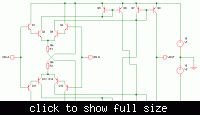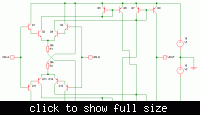farzin0123
Newbie level 5
hi everybody
thanks for this amazing site , im new here and sorry for my lame english
i have a project about op amp design with this Specifications : gain>100 db , phase margin>70 Deg
and rail to rail input and output .
I searched everywhere for sample of a rail to rail bjt op amp but i did'nt find ,
plz tell me your suggestions for this and Where should I start
thanks
thanks for this amazing site , im new here and sorry for my lame english
i have a project about op amp design with this Specifications : gain>100 db , phase margin>70 Deg
and rail to rail input and output .
I searched everywhere for sample of a rail to rail bjt op amp but i did'nt find ,
plz tell me your suggestions for this and Where should I start
thanks




